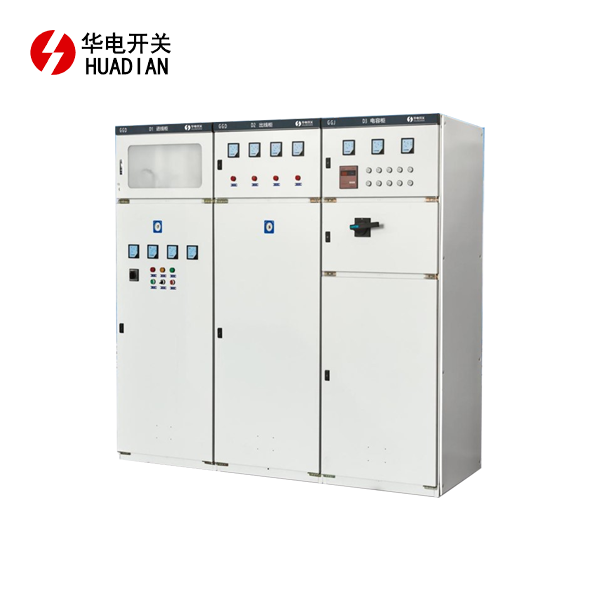Core Components of Low Voltage Switchgear
Circuit Breakers: The Guardians of Electrical Systems
Circuit breakers form the backbone of low voltage switchgear, acting as essential protectors against overloads, short circuits, and other electrical anomalies. By automatically interrupting power flow during abnormal conditions, they safeguard sensitive equipment and reduce fire risks. Modern circuit breakers are available in multiple types—air circuit breakers (ACBs), molded case circuit breakers (MCCBs), and miniature circuit breakers (MCBs)—each tailored for specific applications and current capacities. Their reliable operation ensures continuity of service, protects infrastructure, and provides peace of mind in both industrial and commercial electrical installations.
Busbars: The Power Distribution Highways
Busbars function as the main conduits for electrical power within low voltage switchgear, efficiently channeling electricity to multiple circuits and connected devices. Typically crafted from high-conductivity copper or aluminum, they are engineered to carry substantial currents while resisting mechanical stress and thermal effects. Proper design, spacing, and insulation of busbars are critical for minimizing energy losses, enhancing system stability, and ensuring long-term reliability. As the backbone of power distribution, they play a pivotal role in determining the overall efficiency, durability, and performance of the switchgear assembly.
Contactors and Relays: The Automated Switching Maestros
Contactors and relays serve as vital components for automated electrical control, enabling flexible and safe operation of circuits. Contactors manage high-current switching tasks, such as motor control, while relays govern lower-current circuits, executing protection and signaling functions. Working in coordination, these devices allow remote operation, timed switching, and system automation, reducing the need for manual intervention. By integrating contactors and relays into low voltage switchgear, electrical systems gain enhanced control, improved safety, and operational efficiency, ensuring that equipment functions smoothly under varying load and operational conditions.
Auxiliary Components and Their Functions
Voltage and Current Transformers: The Measurement Wizards
Voltage and current transformers are indispensable components that provide accurate measurements of electrical parameters within the switchgear. These devices step down high voltages and currents to safe, measurable levels, allowing for precise monitoring and control. The data collected by these transformers is crucial for metering, protection, and energy management systems.
Control and Indication Devices: The User Interface
Control and indication devices form the bridge between the low voltage switchgear and its operators. This category includes push buttons, selector switches, indicator lamps, and digital displays. These components enable manual operation, status monitoring, and visual feedback, ensuring that operators can effectively manage and troubleshoot the electrical system.
Surge Protection Devices: The Lightning Guardians
Surge protection devices (SPDs) are the unsung heroes that safeguard sensitive electrical equipment from transient overvoltages caused by lightning strikes or switching operations. These devices rapidly divert excess voltage to ground, preventing damage to critical components and enhancing the overall reliability of the electrical system.
Advanced Features and Innovations in Low Voltage Switchgear
Smart Metering and Energy Management Systems
Modern low voltage switchgear increasingly integrates smart metering and energy management capabilities, offering real-time visibility into power consumption, voltage levels, and system performance. These insights enable facility managers to make informed decisions to optimize energy usage, reduce operating costs, and support sustainability initiatives. By communicating seamlessly with building management systems, smart meters facilitate automated control and predictive maintenance strategies. This integration not only improves operational efficiency but also enhances the overall reliability and longevity of electrical infrastructure, helping organizations meet both financial and environmental objectives.
Arc Flash Mitigation Technologies
Arc flash events present serious hazards to personnel and equipment within electrical systems. Innovative low voltage switchgear designs now incorporate arc flash mitigation measures, including arc-resistant enclosures, fast-acting protective devices, and strategic component layouts. These advancements help contain and quickly interrupt arc flash incidents, minimizing potential damage and significantly enhancing workplace safety. By implementing these technologies, facilities can reduce downtime, limit repair costs, and ensure compliance with stringent safety standards, making arc flash protection a critical feature in modern electrical distribution systems.
IoT Integration and Remote Monitoring
The integration of Internet of Things (IoT) technologies has transformed low voltage switchgear into intelligent, connected systems. Sensors and communication modules enable remote monitoring, diagnostics, and operational control, allowing operators to detect and respond to faults rapidly. This connectivity supports predictive maintenance, reduces unplanned downtime, and improves overall system reliability. Additionally, IoT-enabled analytics and machine learning algorithms provide insights for optimized asset management, energy efficiency, and performance forecasting, empowering facilities to operate more safely, efficiently, and sustainably while maximizing the lifespan of critical electrical equipment.
Conclusion
Low voltage switchgear stands as a cornerstone of modern electrical distribution systems, encompassing a diverse array of components that work in harmony to ensure safe and efficient power distribution. From circuit breakers and busbars to advanced metering and IoT integration, each element plays a vital role in maintaining system integrity and reliability. As technology continues to evolve, low voltage switchgear will undoubtedly incorporate even more sophisticated features, further enhancing its capabilities in protecting electrical systems and optimizing energy management.
Contact Us
Are you looking for high-quality, reliable low voltage switchgear solutions? Contact Shaanxi Huadian Electric Co., Ltd. today at austinyang@hdswitchgear.com/rexwang@hdswitchgear.com/pannie@hdswitchgear.com to learn more about our advanced products and how we can meet your electrical distribution needs.





